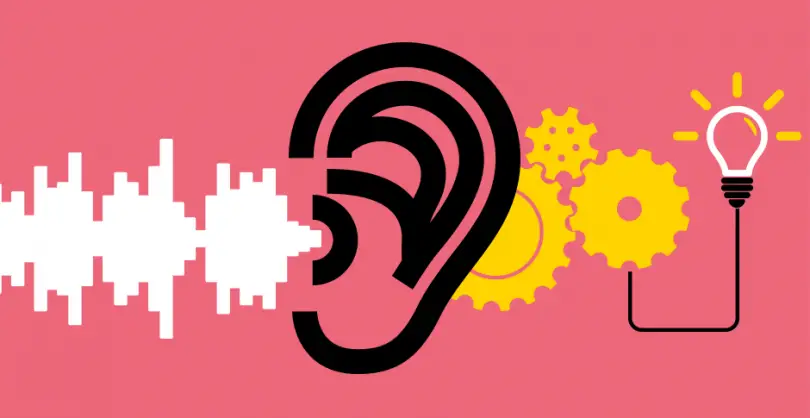How many times have you heard these following responses: “Sorry?” or “Can you repeat that, please?”, and have been struggling to find a way to improve your speaking skills? Specifically, do you realize that the main problem is about your pronunciation, which has a significant influence on how far others understand you as well as their initial impression of you? Indeed, if you make a lot of grammatical mistakes yet have a good pronunciation, you can still get your message conveyed, while the case with those who do not pronounce words properly is quite the opposite. Therefore, correct pronunciation is really important, and that is also why this post is written to give you a step-by-step guide to your problems. A small note is that these tips are suitable for not only beginners, but also good learners wanting to perfect their pronunciation.
TIP 1: Listening skills are important
Before learning to pronounce words correctly, practice listening a lot to news or audio books undertaken by native speakers, who have the standard pronunciation. Try to catch the ending sounds or recognize silent letters, as well as how they are stressed, etc,. They are important factors that determine the meaning of the words and whether others get what you mean. For example, when you say the word “island” and without muting the letter s, it will be mistaken for “iceland”, and “record” should be stressed on the first syllable when it functions as a noun instead of the second as a verb. One more tricky feature is that words that seem familiar to us are not pronounced the way we do: “pizza” /ˈpiːtsə/ (not /piza/). I believe some of you are surprised by this fact, but it is normal because almost everyone makes this mistakes, and what you need to do is correct them from now on by listening more to make yourself accustomed to the sounds.

TIP 2: Speak slowly
Many people define “speak English fluently” as speak English correctly and fast, and tend to follow that misconception, leading to their swallowing the main sounds. As a result, their words are not properly pronounced and they do not achieve their goals, as people find it hard to get their point. However, the truth is that correctness only will do, and it is completely normal if you speak slowly and clearly. On using this tip, you can take advantage of it, because it gives you time to think what you want to say next, in comparison to speaking fast, which makes you sound nervous and indecisive. Learning to pronounce correctly is like any other activity: the more relaxed you feel, the more effective your acquisition becomes.

TIP 3: Learn about phonetics
First, you have to learn by heart all the phonetics. They can be quite hard to acquire in the beginning as they look like ancient languages (my personal feeling), but after only several days of efforts, you can get used to them easily.
Next, use flashcards to help you. You write the word with which you have difficulties memorizing and pronouncing correctly on one side, and write it phonetically on the other side. You should revise them regularly and try to remember how they look like, and this method is often referred to as visual learning. Multiple studies revealed that this method helps you call back on things more easily, therefore knowledge can be retained longer. If you are have been using normal methods with little or no success so far, try switching over to visual learning to see how it works miracles.

TIP 4: Challenge yourself with tongue twisters
Have you ever found yourself at a loss to distinguish between sounds that seem familiar like the short and long “u” and “e” sounds, or “t” and “th”? Don’t feel bad, I can confidently confirm to you that every English learner has been in such situations at least several times, even the native speakers. They are generally called tongue twisters – sentences or poems that are made up of many words that sound familiar, and are hard to recite. You can give yourself a break by giving them a try, but need not put too much emphasis on them- do it for fun! One plus of the tongue twisters is that they give you a sense of satisfaction when you finally master them. And here are common tongue twisters for you to practice:
How can a clam cram in a clean cream can?
If a dog chews shoes, whose shoes does he choose?
How much wood would a woodchuck chuck
If a woodchuck could chuck wood?
He would chuck, he would, as much as he could,
And chuck as much as a woodchuck would
If a woodchuck could chuck wood.

TIP 5: Record yourself
Last but not least, record yourself along the way to see how you progress. Pay attention to your mouth as well as try to stress words and pronounce correctly. Make sure your intonation patterns and body language are natural, so that you would not look too stiff and nervous when you are in a real conversation. Don’t be careless just because you are practicing, do everything thoroughly in the process so that you can achieve the best results. You can have a friend or teacher to check out your records to see how much they can understand, or use Google to search with your voice, which requires standard pronunciation. If you keep failing, a positive attitude is extremely important to keep you going, it is just because the time hasn’t come yet. As long as you work hard, you will surely meet with success in the near future.

Above are five small yet highly effective tips which help you get closer to perfect pronunciation when they are used in combination. You should also practice each of them separately to see which works best for you, as what I recommend are the most popular methods. A lot of English speakers managed to better their pronunciation thanks to them, and now it’s your turn to repeat history!



